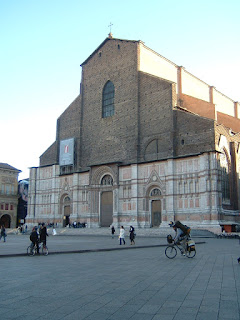First night at the world’s most famous opera house
 |
| La Scala opera house is located in the heart of Milan |
Milan’s Teatro alla Scala was officially inaugurated on this day in 1778.
Known to Italians simply as La Scala, the theatre has become the leading opera house in the world and many famous artists have appeared there.
A fire had destroyed the Teatro Regio Ducale, which had previously been the home of opera in Milan. A group of 90 wealthy patrons, the owners of private boxes in the theatre, wrote to Archduke Ferdinand of Austria-Este asking that a new theatre be built.
The new theatre was built on the site of the former Church of Santa Maria alla Scala, which is how the theatre got its name. The church was deconsecrated and demolished to make way for the theatre.
With the cost of the project met by the 90 patrons, who paid in advance for boxes, the new theatre was designed by neoclassical architect Giuseppe Piermarini and at the official opening on 3 August 1778, Antonio Salieri’s opera L’Europa Riconosciuta was premiered.
As with most theatres at the time, the main floor had no seats, with audience members standing to watch the performances. This had the effect of making the theatre a meeting place, but also a venue for business dealings, and sometimes the noise generated by the traders would bring complaints from genuine opera-lovers that their enjoyment was impaired.
Oil lamps illuminate the venue at first. Mindful of the fire hazard this posed, the theatre managers always made sure that there were hundreds of buckets of water to hand in rooms adjoining the auditorium.
The world’s finest singers have appeared at La Scala during the past 200 years and the theatre has hosted the premieres of operas by Rossini, Donizetti, Verdi and Puccini.
La Scala’s original 18th century structure was renovated in 1907 and, after bomb damage during the Second World War, it had to be rebuilt and was reopened in 1946, the occasion marked with a concert conducted by Arturo Toscanini, who was twice La Scala's principal conductor, with a soprano solo by Renata Tebaldi.
The world’s finest singers have appeared at La Scala during the past 200 years and the theatre has hosted the premieres of operas by Rossini, Donizetti, Verdi and Puccini.
La Scala’s original 18th century structure was renovated in 1907 and, after bomb damage during the Second World War, it had to be rebuilt and was reopened in 1946, the occasion marked with a concert conducted by Arturo Toscanini, who was twice La Scala's principal conductor, with a soprano solo by Renata Tebaldi.
 |
| The beautiful Galleria Vittorio Emanuele II |
Teatro alla Scala is in Piazza della Scala in the centre of Milan across the road from the Galleria Vittorio Emanuele II, an elegant arcade lined with cafes, shops and restaurants which was built to link Piazza della Scala with Piazza del Duomo, Milan’s cathedral square.
Travel tip:
La Scala has a fascinating museum that displays costumes and memorabilia from the history of opera. The entrance is in Largo Ghiringhelli, just off Piazza della Scala. It is open every day except the Italian Bank Holidays and a few days when it is closed in December. Opening hours are from 9.00 to 12.30 and 1.30 to 5.30 pm.
(Photo of Galleria by Emily Chochkova CC BY-SA 3.0)
Home


